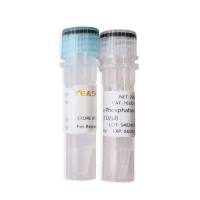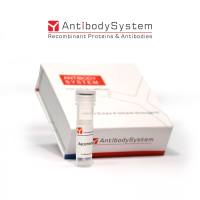Phosphatasing with Shrimp Alkaline Phosphatase (S.A.P.)
互联网
<center> <h3> <font>Phosphatasing with Shrimp Alkaline Phosphatase (S.A.P.)</font></h3> </center>
Use to prevent linearized vector plasmid from recircularizing.
The phosphatase from shrimp is easier to get rid of than is CIP, because SAP is heat labile.
Our SAP is located in the -20 enzyme freezer. Use gloves, of course. Like other enzymes, put it into the iceblock before removing it from the freezer.
After linearizing the parent vector:
Add 1µl of the SAP to the tube. SAP has a buffer to go with it, but it usually isn't used because the reaction works in most restriction enzyme buffers buffer. (1µl=1unit. (?) ).
Incubate the tube at 37°ree; (water bath) for 1 hour.
Heat-inactivate the SAP at 75°ree; (heat block) for 10-15 minutes. (I heat-inactivated for 15 minutes, to kill the heat-abile restriction enzyme also).
GENERAL PROTOCOL:
Use 1µl S.A.P. ; incubate at 37°ree;C for 1 hour.
Use the 10X SAP Buffer, or don't bother if the sample is already in a Restriction Enzyme Buffer. ("SAP is active in virtually all restriction enzyme buffers and may be added directly to a restriction enzyme digest").
Note: "SAP is active in NaCl from 10mM to 150mM and in KCl from 20mM to 100mM".
"SAP is readily inactivated at 65°ree;C for 15 minutes".








